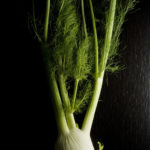The heat of late summer calls for lighter meals packed with fresh produce. Fortunately, there is an abundance of delicious, seasonal produce to pick from. Not only are seasonal items packed with flavor and beneficial nutrients, they tend to be more affordable as well.
Finding unique ways to use summer favorites can help combat any recipe fatigue you may have experienced in recent months. From packing picnics for the beach to firing up the grill to assembling no-cook meals, use Tiny New York Kitchen’s search function to help you find quick and tasty meals for all to enjoy.
Mix up your meals and fuel your family throughout the long days of summer with these ideas:
Grill Seasonal Vegetables
Add some color (along with vitamins, minerals, and fiber) to your menu by tossing fresh vegetables on the grill. Zucchini and summer squash are ideal as they can be diced and cooked in foil, on skewers or cut into uniform planks and placed directly on the grates. Regardless of the method, coat them with a little bit of olive oil and your favorite herbs and spices for the tastiest result.
Enjoy Something Sweet Any Time Of The Day
Melon is the perfect summer treat. Watermelon, cantaloupe and honeydew have just the right amount of sweetness this time of year, plus they have high water content, helping you to hydrate with each bite. Cut up slices for an easy snack on the go or scoop out melon balls to add to a fruit salad for a refreshing dessert.
Take Advantage Of Fresh Herbs
One of the best ways to add flavor to dishes, without added sodium, is to use herbs and spices. Basil, mint, oregano, and cilantro are excellent during warmer months as they pair perfectly with seasonal produce and light proteins such as fish.
Choose A New Fruit Or Vegetable
Pick out a new fruit or vegetable for your family to try during the remaining summer months. Kids love to choose by color! Then, plan a meal around your new produce pick.
Build A Picky Eater Snack Plate
Not only will this quick meal hack keep you out of a hot kitchen, but it is a great way to encourage picky eaters to get a bit more adventurous. Mix & match favorite fruits and vegetables with new options available this time of year. Have a strawberry lover? Put one or two blackberries next to them on the plate. Does your child devour cherry tomatoes? Try adding a few cucumber slices, too. They just may be tempted to try a bite of something new. Then, add in a no-fuss protein, like a hard-boiled egg or shredded rotisserie chicken and some easy whole grains such as crackers, popcorn or pita bread. Round it out with dairy favorites such as string cheese or yogurt. There you have a balanced plate without much hassle.
“Work With What You Got!”
©Tiny New York Kitchen © 2021 All Rights Reserved
English peas (sometimes called garden peas or pod peas) have a fresh, slightly grassy flavor that is the essence of spring. English peas are wonderful puréed and made into a creamy soup or spread. They add bright points of color and flavor to pilafs, risotto, fried rice, pasta, and soups. Steamed and sprinkled with fresh mint or parsley, they make a wonderful side dish.
Pods should be bright green and feel heavy. Each 1 pound of whole pods yields about 1 cup of shelled peas so make sure to pay attention to the desired measurement in your recipe. Their sugars convert quickly to starch so English peas are best eaten the day that they are purchased. If needed, store them in an airtight container in the refrigerator for up to 3 days. To prepare, shell peas right before cooking them in order to keep them from drying out. Once shelled, peas can be briefly cooked in 1/4 inch of steaming water for 3 to 4 minutes. They will quickly turn soggy and lose their vibrant color, so it is important not to overcook them.
“Work With What You Got!”
©Tiny New York Kitchen © 2021 All Rights Reserved
Crunchy, juicy, nutrient packed jicama is an unsung hero of the produce aisle. Technically a cousin to green beans, jicama is a root vegetable from Mexico available year-round that is delicious cooked or raw. With a mild, earthy, slightly sweet flavor and an apple like consistency. It’s a great addition to salads, salsas, slaws, and grazing boards. Jicama also works as lighter swap for potatoes in baked and air fried recipes, and it’s delicious sautéed or boiled, too.
If you’ve never tried jicama, don’t be intimidated. Start by choosing one with a smooth, unblemished surface and thin brown skin. The skin should be thin enough to scrape with your thumbnail to reveal the white flesh inside. Avoid thick skinned, bruised, or shriveled jicama, which are signs of aging.
Once you’re ready to prep, start by trimming off the ends of the jicama and slice in half. Then, use a knife to gently peel away the skin.
For Jicama Sticks:
Step 1: Carefully slice off the rounded parts of the jicama, creating a flat surface.
Step 2: Cut each half into 1/4-inch slices.
Step 3: Stack slices and cut evenly into sticks.
Fresh, raw jicama sticks are a great addition to lunchboxes or served on a vegetable platter with your favorite dip. They can also add unexpected, satisfying crunch to cooked dishes, like a noodle salad with jicama and a miso vinaigrette.
Jicama sticks are delicious roasted, too. Their firm texture can withstand the heat, while the edges get golden brown and tender. Toss together with sweet peppers and spices for a simple, satisfying sheet pan side that pairs well with all kinds of meat and fish.
For Diced Jicama:
Step 1: Follow the steps above to create jicama sticks
Step 2: Line up sticks or stack into a pile, then evenly cut into cubes.
Diced jicama is a vitamin and fiber-rich way to add bulk to all kinds of green, grain, and protein-based salads. I love the combination of crunchy jicama with creamy avocado served with grilled chicken.
Moist and mild flavored jicama also plays well with fruit, especially melon. A refreshing combination of watermelon, jicama, and fresh mint falls somewhere between salad and salsa, delicious scooped onto tortilla chips or just spooned straight from the bowl.
Next time you’re at your local grocery store or market pick up jicama and experiment with ways to incorporate it into your recipes.
©Tiny New York Kitchen © 2021 All Rights Reserved
Fennel is a member of the carrot family, though it is not a root vegetable. The base of its long stalk weaves together to form a thick and crisp bulb that grows above ground. Fennel’s leaves, seeds, and stems all have a sweet, faintly anise like flavor. The stems of fennel swell and overlap at the base of the plant to form a bulb with white to pale green ribbed layers that are similar to celery in appearance and texture. Light and feathery, the pretty green leaves slightly resemble fresh dill. Use them as a bed for steaming fish or in small amounts as a garnish.
Originating in the Mediterranean, the fennel bulb appears often in Italian and Scandinavian cuisines. It can be eaten raw, grilled, baked, braised, or sautéed. While grilling, you can toss a handful of dried or fresh fennel stems onto the charcoal to infuse meat or fish with a light anise flavor.
When selecting fennel choose fresh bulbs that are smooth and tightly layered with cracks or bruises. Fat, rounded bulbs with white and pale green color will tend to be more succulent than thin or yellow ones. Avoid any with wilted leaves or dried layers. Now available year-round, fennel is at its peak from late fall through winter. Grocers sometimes incorrectly liable fennel as sweet anise.
When storing, keep fennel bulbs in a perforated plastic bag in the refrigerator for up to 5 days. If kept too long, they will lose their flavor and toughen.
When preparing, remove the green stems and leaves, saving them to flavor or garnish other dishes such as soups or fish. Discard the outer layer of the bulb if it is tough and cut away any discolored areas. Cut the bulb in half lengthwise and remove the base of the core as it is thick and solid. Gently separate the layers with your hands and rinse well to remove any grit between them. Slice or cut as your recipe directs.
©Tiny New York Kitchen © 2021 All Rights Reserved
Heart healthy beets are packed with nutrients and are perfect for late winter meals. You will love them for their vibrant color, sweet flavor, and versatility.
There are just 60 calories in 1 cup of beets. While low calorie, beets are also packed with potassium, iron, vitamin C, and heart healthy nitrates. The greens are rich in vitamins A and K. Try using beets in soups and sautés.
While red beets are the most common variety, other varieties of beets do exist. Golden beets, as their name implies, are a golden yellow color. Chioggia beets contain red and white stripes on the inside, which is why they are often referred to by their nickname – candy cane beets.
To store fresh beets, separate the leaves from the root and place in separate plastic bags in the refrigerator. The greens should be used within a few days while the roots can last up to two to three weeks.
To peel uncooked beets, use a vegetable peeler to remove the thin skin. For roasted beets, use a paper towel to gently rub off the skins. This gives you a better grip and helps keep beet juice from staining your hands.
Beet juice has been used as far back as the 16th century for makeup, hair dye, and fabric dye. It’s still used commercially as a natural food coloring and clothing dye.
To remove beet juice stains from your cutting board, sprinkle with salt and rub with a lemon half before rinsing. You can remove stains from your hands by rubbing them with a little baking soda, then washing with soap.
Beets are high in nitrates, natural compounds that may help lower your blood pressure and help your body use oxygen more efficiently. Many pro athletes and Olympians drink beet juice to improve their performance.
Beets get their deep red color from compounds called betalains, which have strong antioxidant and anti-inflammatory properties.
37% of the recommended daily intake of folate for adults is in 1 cup of raw beets. Folate needs increase during pregnancy, as this vitamin helps babies develop in the womb, making beets a great addition to a pregnant woman’s diet.
©Tiny New York Kitchen © 2021 All Rights Reserved
Roasting refers to proteins and vegetables cooked mostly at high temperatures in the oven. Baking uses a lower temperature to cook breads, baked goods, and casseroles.
Roasting makes any vegetable taste better. It brings out their flavor, caramelizes their natural sugars, and adds crunch. If your family doesn’t love certain vegetables like broccoli or Brussels sprouts, roasting is a great way to change their mind. Double what you’re roasting and then turn extra servings into quick meals later in the week. Cooking a little extra with one meal lets you make the most of value-sized packages of proteins and other store sales. With leftover already planned, you won’t need to lean on takeout.
Why we love to roast:
It’s Affordable! Inexpensive ingredients are tastiest when roasted. Root vegetables are browned and crisp, tomatoes and grapes are extra juicy and sweet, and tough cuts of beef are fall-apart tender. You also don’t need any special equipment to roast.
Roasting Is Healthful! Roasted foods need very little fat to cook compared to frying or sautéing. Roasting also intensifies flavors without added salt, sugar, or other ingredients.
It’s Easy! Roasted foods need little prep before they cook. And once the oven door closes, you can walk away. Fewer pans and utensils are needed, making cleanup easier too.
Essential Tools For Roasting:
Rimmed Sheet Pan: The rim keeps vegetables from falling off the sides and catches any juices from meats and fish.
Oven-Save Skillet: Go from stovetop to oven and back. Sear meats before roasting or make a pan sauce with the meat drippings after roasting.
Roasting Pan: Best for large roasts, hams, and turkeys. An inner rack lifts the meat so it can brown and crisp underneath.
Parchment Paper: Line pans to keep foods from burning and sticking, then toss for easy cleanup. If roasting at a higher temp or broiling use foil.
Metal Tongs: Flip and stir foods on a hot pan with ease. Look for tongs with a heat resistant grip.
Silicone Brush: Brush on a sticky glaze or baste foods with sauce. The silicone bristles are easy to clean.
Tips For Sheet Pan Roasting:
Jump Start Browning by preheating your sheet pan before adding vegetables.
Pat foods very dry with paper towels so the outside browns while the inside cooks through.
Cut foods to the same size and thickness so smaller pieces don’t burn.
Space out foods on the sheet pan so they have room to crisp and brown.
Let sheet pans cool before rinsing to keep the metal from warping.
©Tiny New York Kitchen © 2021 All Rights Reserved
Keeping Resolutions To Get Healthier
People often set their goals too high or don’t take the time to plan out how they’re going to accomplish their resolution. The hardest part of starting anything, especially a healthy living plan, is making that goal a top priority. Create an achievable and specific goal that’s grounded in micro-actions that you can start right now. These simple baby steps can keep you motivated. Here are some ways to begin your path to getting healthier. Just start where you are!
Get More Physically Active
Make it happen by entering it into your schedule. Increase your exercise routing from three to four days per week by adding a 20-minute strength training session on Fridays this month.
Go To Bed Earlier
If your goal is to get to sleep earlier, start by determining how much earlier and how often you will practice this routing. Start with 5 to 10 minutes. The alarm on your phone can help you by setting cues. Build up from there.
Get Up Earlier
Begin with a manageable goal, like waking up ten minutes earlier, which is easier than waking up an hour earlier. Then every other month reset your alarm another 10 minutes earlier.
Eat More Vegetables
More vegetables more often can be your mantra for 2021. Try adding one new vegetable to dinner meals that you make at home this month.
Spend More Time Outdoors
Take a break to for a 15-minute walk outdoors. The fresh air is good for you. Make a daily habit of it.
Pack Your Lunch
Packing your lunch is a good place to start when you’re trying to eat healthier. You can ease the burden by doubling up on the vegetables that you prep at dinnertime two or three times per week, then bring the leftovers to work.
Eat Regular Meals And Snacks
Stashing a piece of produce in your purse can go a long way when you’re stuck waiting in traffic on your way home from work. A healthy snack can keep you from feeling ravenous, and potentially overeating, at your next meal. Make it your goal to pack at least one apple, pear, or bag of carrots in your bag every day so you can snack when you’re in transit.
Drink More Water
Drinking water has a myriad of benefits, but one of the unsung ones is that it forces you to get up and move periodically throughout the day. Hydrate every hour to get every hour.
Limit Alcoholic Beverages
If grabbing drinks after work with coworkers for the purpose of networking interferes with your desire to drink less, consider multi-tasking. Scheduling a walk or exercise class with a colleague can help you clock extra activity and leave you feeling revived rather than depleted. Plan ahead to make sure these new networking events make it to your calendar as often as work drinks used to surface.
Write Down Your Goals and include the steps you will take to keep it. Having a clearly articulated goal and a plan of action is vital for success.
Keep things simple. Break a big goal into a series of smaller goals. Want to lose 50 pounds? Shoot for losing 5 percent of your body weight first, or set five 10-pound incremental weight loss goals.
Mark your achievements. Each time you make a small lifestyle change aimed at reaching your goal (adding five minutes to your daily walk for instance) put a star on your calendar so you can see your progress.
Start with small changes. If weight loss or a healthier lifestyle is your goal, begin with a simple step like swapping one snack per day for a piece of fruit. The benefits will add up without majorly impacting your lifestyle.
Tap the power of a streak. Let’s say you keep your resolution for a week, or two weeks, or a month. That’s a fabulous streak and you can let it drive you. And if something happens to force you to break it then start a new streak!
And Remember….Just Start Where You Are!
©Tiny New York Kitchen © 2021 All Rights Reserved
This holiday season, whether you are planning your usual celebrations or making new smaller traditions it is important to balance holiday favorites and healthful options that are delicious. Sticking to wellness goals can be challenging during the holidays. Here are some tips to help you stay on track.
Pack Healthful Snacks For Travel
If you’re traveling this holiday season it can be challenging to eat healthy. Rest stops, gas stations, and airports aren’t known for healthful snack options. Pack your own for holiday trips. Try apples or bananas paired with nut butter, trail mix, or pre-cut vegetables with hummus cups. Be sure to fill up your water battle, too.
Mindful Eating
Mindfulness is the practice of being present and in the moment and can help you fully enjoy each eating experience. Turn off technology, set the table and eat slowly, using all of your senses with each bite. These habits can help you tune into your hunger cues and allow you to savor your meals without overdoing it. Plus, mindfulness can help you fully engage in the time you’re spending with loved ones.
Work In A Workout
When you’re in the thick of holiday prep, your exercise routine may fall by the wayside. Since you can’t add more hours to the day, fit in exercise when you can by parking farther away at the grocery store or taking the stairs at the mall.
Indulge Your Sweet Tooth Mindfully
There are many holiday treats to choose from. Plan to pick out your favorites and truly savor them. That will make it easier to skip the rest. If you stick to your normal healthy eating patterns most of the time, you will come out of the holiday season satisfied but not over stuffed.
©Tiny New York Kitchen © 2020 All Rights Reserved
Here in the Northeast we often think of there being a short growing season. In other regions, many people garden as if there’s a beginning and an end as well. But gardening, anywhere you do it, is circular. There may be slow times, but planning ahead for what’s around the bend is crucial.
Right now, I’m thinking about next year’s garlic. Here we are, another turn of the season. Cool days and nights are creeping in and it’s really quite wonderful that one of the last planting tasks in the garden is getting garlic in the ground. Planting in general may feel counter to all the other fall tasks, but when you plant garlic you are “putting it to bed,” since it needs a cold cycle to perform well. On the other hand, the very act of planting-looking forward to spring and summer and harvest- brings the cycle of the seasons together quite nicely, proving that a garden never really begins or ends; it only changes.
Ho much you plant depends on what you want out of your crop. One pound of garlic can plant between 15 to 30 feet depending on the variety, and the amount of space you give it. Space rows 12 inches apart in whatever bed system you use.
If you would like to produce your own seed stock and your own eating stock, plan to reserve the top 30% of your harvest for planting. Each pound of garlic can produce between 50 to 75 heads of garlic, since each clove can produce a head.
When following a vegetable rotation schedule, one knows where the garlic will be planted well ahead of time. This gives an opportunity to make sure the beds are well worked, weeded, amended and prepared.
Garlic prefers rich, well-drained, and weed-free soil located in full sun. Ideally, choose a spot that is in full sun from winter through spring. It can be difficult to grow a crop in your weediest beds, so consider this when location scouting during the summer.
Compost, aged manure, and weed-free hay or straw mulch are good choices. Give yourself plenty of time to get this sorted out.
A few days prior to planting, prep your site.
Choose a sunny day in October when the soil is still warm. Try to leave enough time before the ground freezes solid for the garlic to set roots. Garlic can be planted any time before the ground freezes solid, though, ideally 3 to 6 weeks prior.
Begin by breaking apart the heads of garlic into cloves. Count the cloves and determine the amount of space you need. Most hardneck varieties have 50 to 90 cloves per pound. Garlic prefers full sun, so choose a spot that will get full sun for the spring and early summer. Each clove will be planted at 6” spacing, in rows 12” apart. Weed and work a proper amount of garden space. After cultivating the space, mark the rows. Plant cloves root side down, 2” deep, at least 6” apart, in rows 12” apart. Water and cover with mulch. Your garlic will need to be tended to in the spring, once the ground warms and it begins to grow.
Spring growing conditions and care: Garlic begins to poke through the ground as soon as the soil warms. If you covered your garlic with a thick mulch layer, rake it back to help warm the soil faster.
Garlic prefers rich, weed-free soil and ample water. Beginning in the spring, pull weeds when small, taking care not to damage your garlic when pulling them out. Hardneck varieties produce garlic scapes in the spring. If left on the plant, the scapes will draw energy from the bulb, reducing size and quality. Once the scapes emerge, cut them off immediately to direct the plants’ energy into bulb production. The scapes are an edible spring delicacy.
Giving your garlic a nutrient boost in the early spring is highly recommended. Garlic performs well with a nitrogen boost in the form of alfalfa meal, or a light side-dress of compost.
©Tiny New York Kitchen © 2020 All Rights Reserved















